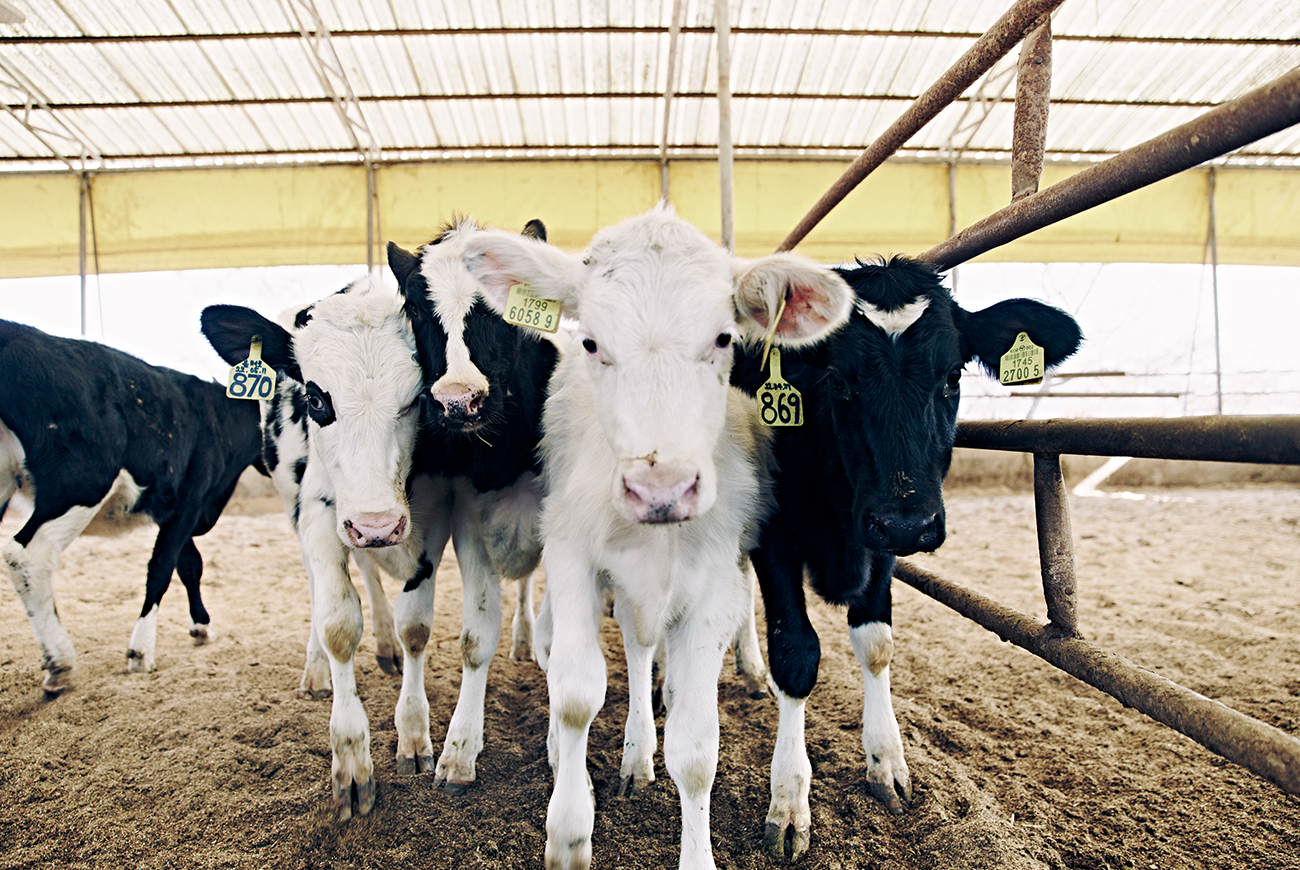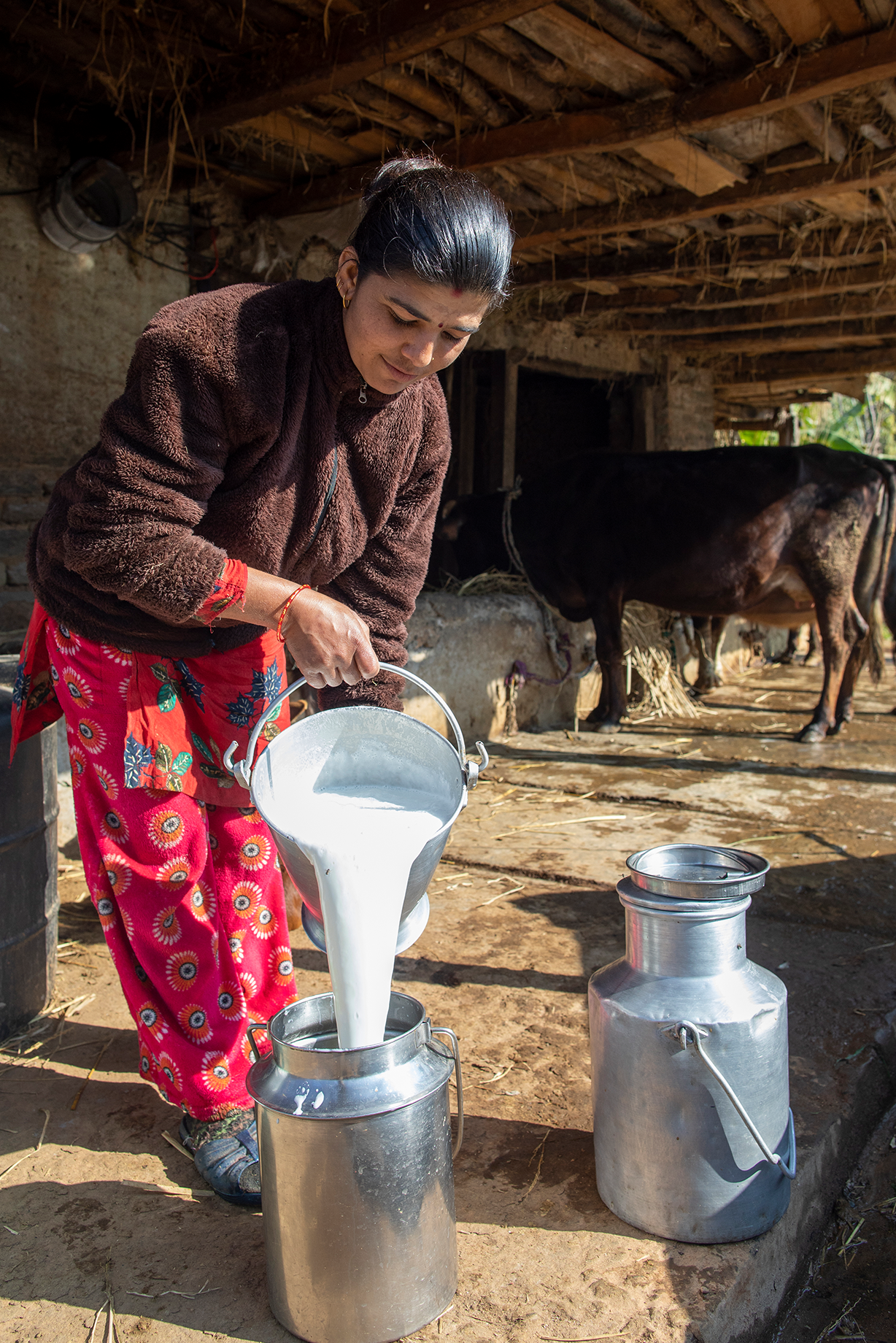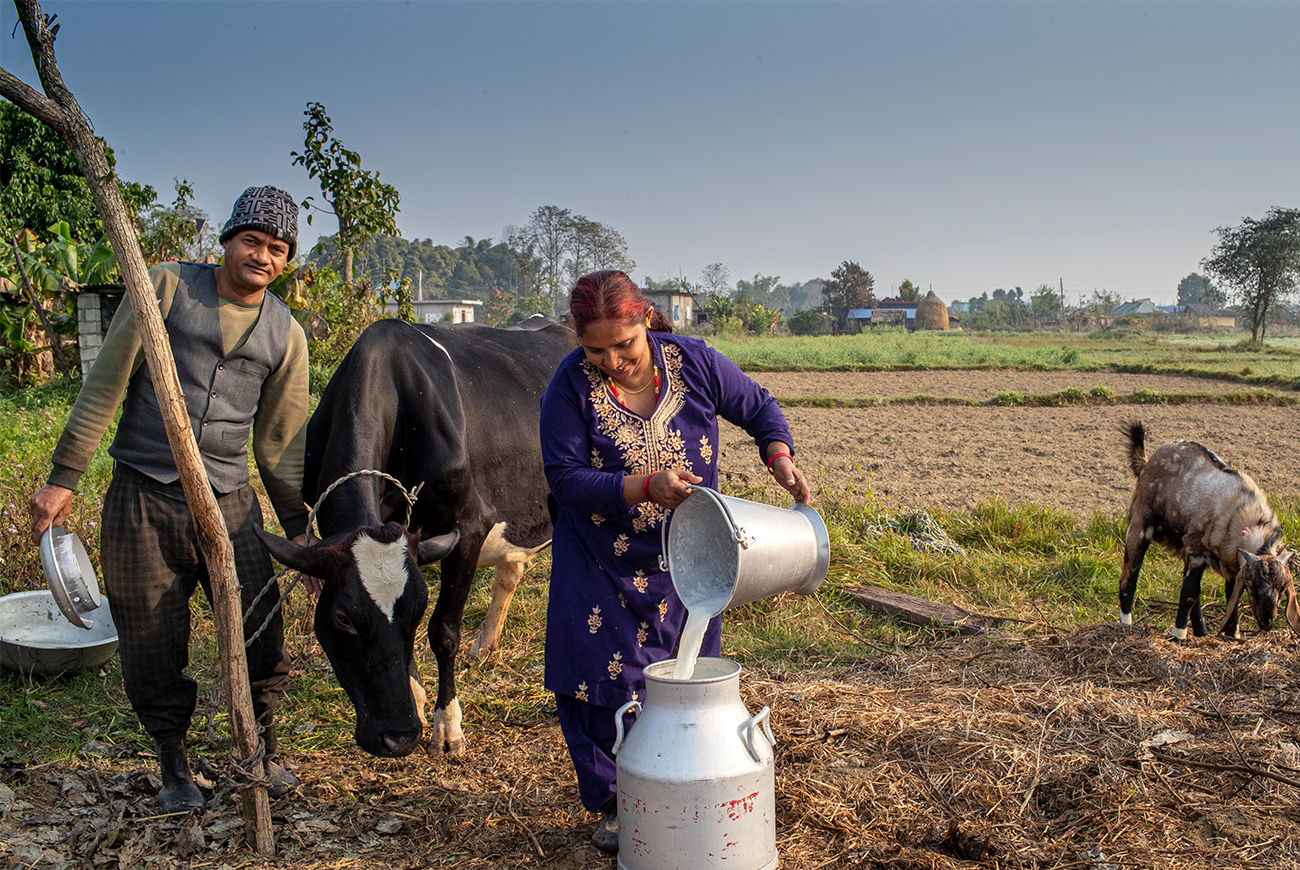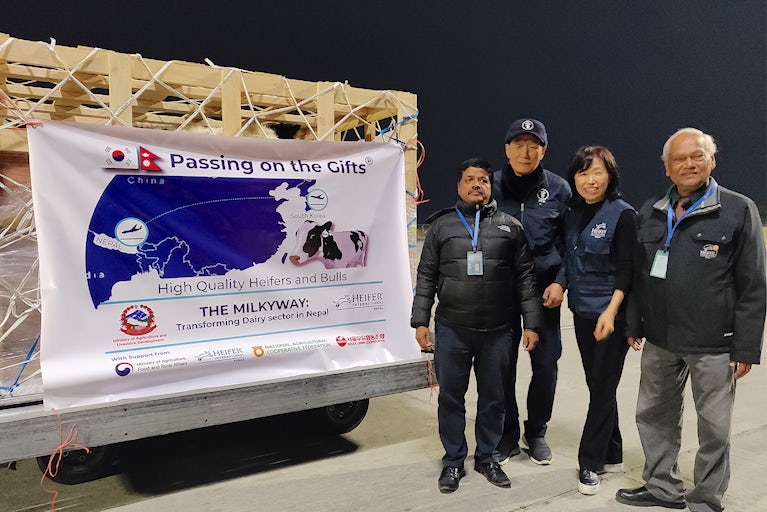In Nepal, Heifer International has been working alongside farming families for more than two decades to help them grow their yields and incomes while feeding their communities — from training on climate-smart practices to strengthening value chains and improving access to inputs like veterinary care and animal fodder.
Core to this effort to better lives and livelihoods is the process of Passing on the Gift®. This act of farmers sharing valuable agricultural assets, such as training, tools and seeds, creates a sense of community and mutual success in our regions of work, laying the groundwork for long-term prosperity.
This month, the South Korean government took this concept to a lofty level with the transfer to Nepal of 100 Holstein heifers and 20 high-quality breeding bulls donated by Korean dairy farmers.
The animals, donated at no cost to the people of Nepal, will form part of the ongoing work to improve the Nepalese dairy value chain and bolster dairy animal ownership and household milk production, which has been associated with better child nutrition and improved family diet in rural Nepal during the COVID-19 pandemic.

This government-to-government initiative, known as the Milky Way project and facilitated by Heifer Korea and Heifer Nepal, aims to double milk productivity in Nepal and benefit more than half a million smallholder dairy farmers by 2030.
For their part, the South Korean government ensured the availability of animal resources, in coordination with the country’s dairy and cooperative sectors, while the government of Nepal will support the breeding, processing and improved husbandry initiatives that strengthen the technical capacity of Nepal’s National Livestock Breeding Organization.
The lack of a systemic approach to cow breeding has proved a major hurdle to the development of Nepal’s dairy sector, with average milk production from crossbred heifers amounting to about nine liters per day. Local, unimproved breeds tend to produce much less than that, which has left Nepal deficient in milk supply and reliant on imports of nearly $17 million annually to fill the consumption gap.

“We believe the gift of heifers and bulls will contribute to building a high-quality nucleus herd in Nepal, which will transform and modernize the dairy industry,” said Park Chong-Suk, ambassador of the Republic of Korea to Nepal.
This effort traces its history to the early 1950s when Heifer gifted South Korea poultry and cows to combat the severe hunger and poverty the country was experiencing amid the Korean War. Over time, the cows helped South Korea transition into one of the top three milk-producing nations worldwide.
The arrival of livestock in Nepal signals a similar opportunity to revolutionize the dairy sector, and a continuation of Heifer’s work to bolster farmers’ yields, incomes and access to reliable markets.
Expanding Incomes for Smallholder Farmers
Of the 100 Korean heifers, 81 are being gifted to 50 farming households in the municipality of Kamalamai, in Nepal’s central-south Sindhuli district. These Heifer-supported households will comprise a “model dairy village,” where their Korean heifers will breed with the Korean bulls and the resulting male offspring will increase the number of breeding bulls — expanding the reach of the project across the country over time.

For local farmers like Rukmani Adhikari, who lives in Kamalamai with her husband Madhav and their three children, the incoming cows hold a promise of more profitable livelihoods and expanding incomes.
“People were excited when they found out the cows from Korea could produce 25 liters of milk every day, and I was overjoyed when I found out I was going to be one of the participants,” said Rukmani, who began dairy farming 11 years ago and whose 16-cow herd produce an average of 10 liters per day per cow. “I’d have been happy even if the cows’ yield was only 15 liters.”
Kalamalai was chosen as the location for this project following a feasibility study which showed the area’s enormous potential for dairy investments, thanks to its moderate climate and reliable rainfall. Many local farmers, like Rukmani and her family, are already pursuing dairy production, and the municipality’s road network is connected to three major highways, which will facilitate market linkages.
Like the other selected farmers, Rukmini and Madhav feel prepared for the new breed’s arrival following training from Heifer on animal care and well-being, such as shed specifications, manure management and feeding practices. They also received technical guidance from expert representatives of South Korean dairy farming cooperatives.
The farming households will have readily available support from community agrovet entrepreneurs (CAVEs), local providers of basic livestock care who have been trained by Heifer and its local partners in monitoring and maintaining the health and well-being of the Korean cows. The CAVEs will also coordinate closely with veterinary doctors assigned to the project to address any issues requiring expert attention.
The Wealth of High-Quality Genes
For Heifer Nepal, which recently celebrated its 25th anniversary and currently supports dairy farmers marketing around 137,000 liters of milk daily, the gift of Korean cows represents a major step forward in efforts to support the government’s economic plan, in which the dairy sector plays a key role.
“The country’s Agriculture Development Strategy lists priority value chains for development, and dairy is very high on the list,” said Neena Joshi, Heifer Nepal’s senior director of programs in cooperative development in Asia. “It is important for economic growth as well as the livelihood of the people.”

While 81 heifers are distributed to farming households, five of the remaining heifers are going to the National Agriculture Research Council; the other 15 and all 20 bulls are going to National Livestock Breeding Offices to develop the nucleus herd.
“One of the major gaps [for the dairy sector] was not having quality genetic resources,” Neena added. “So, this collaboration is going to be a true game-changer in terms of improving dairy productivity and reliability.”
Thanks to this collaboration and the ongoing coordination between the governments of South Korea and Nepal, the dairy sector is poised for more productive and profitable days ahead — and, with this change, more farming families escaping the grips of poverty and leading lives of dignity.


